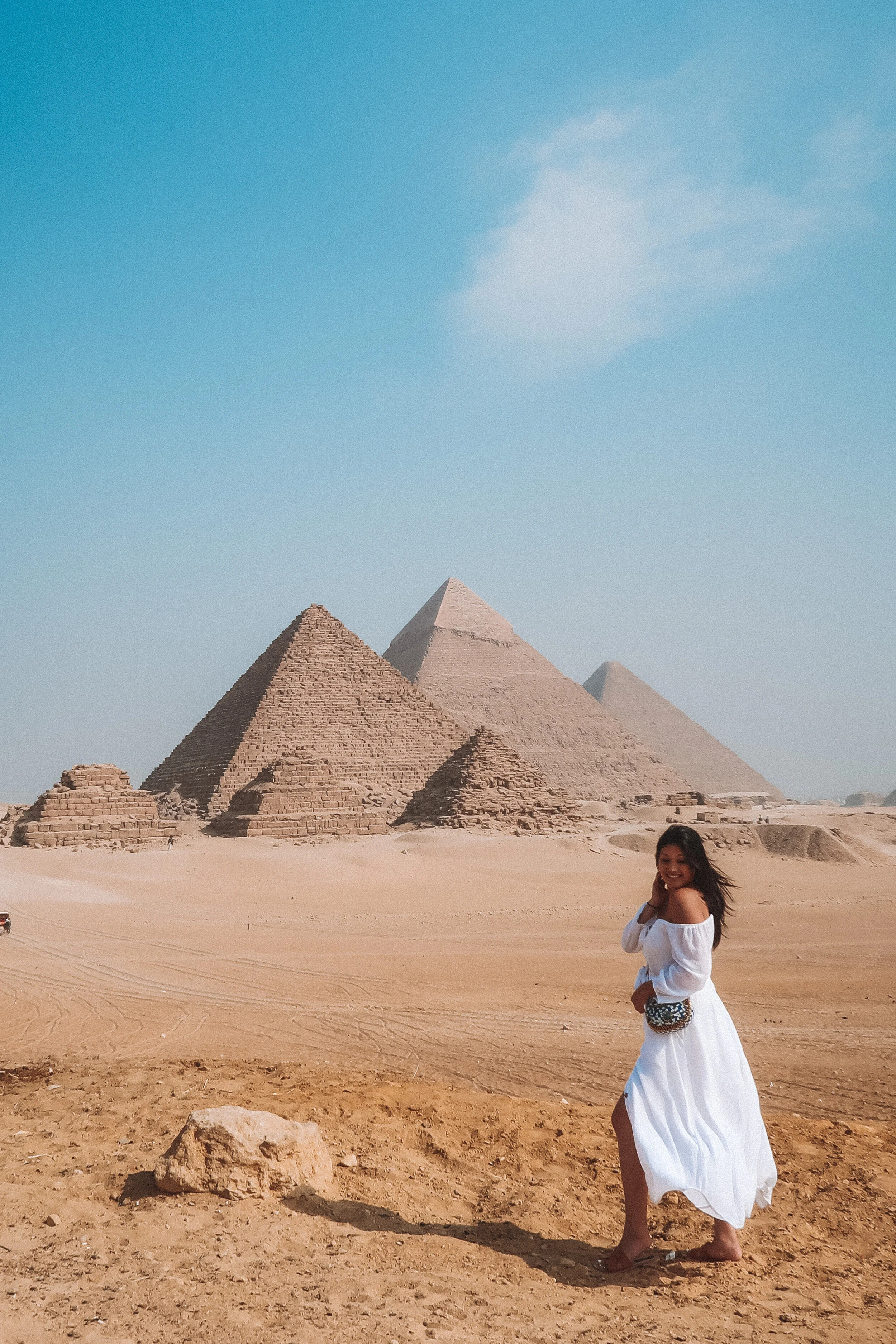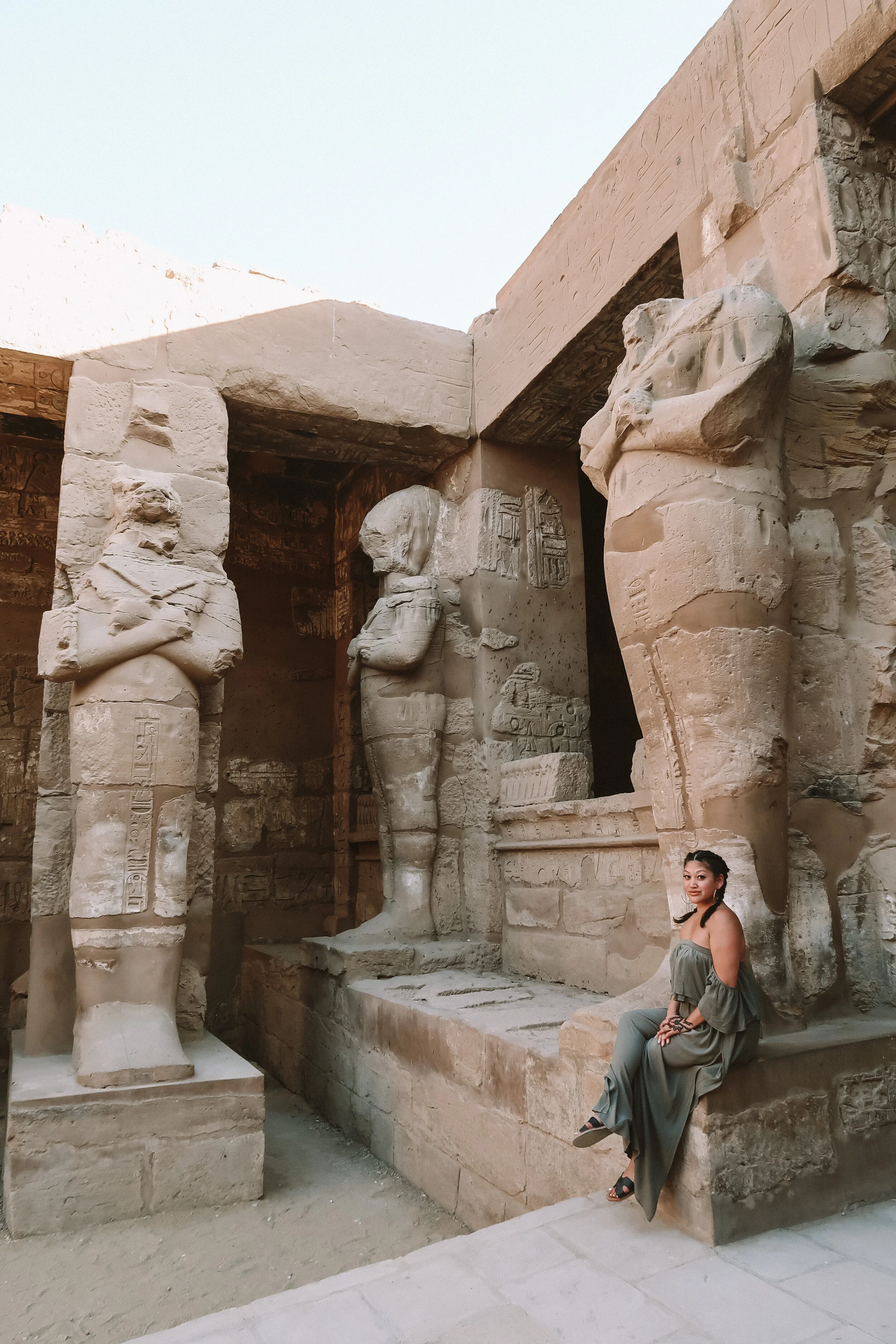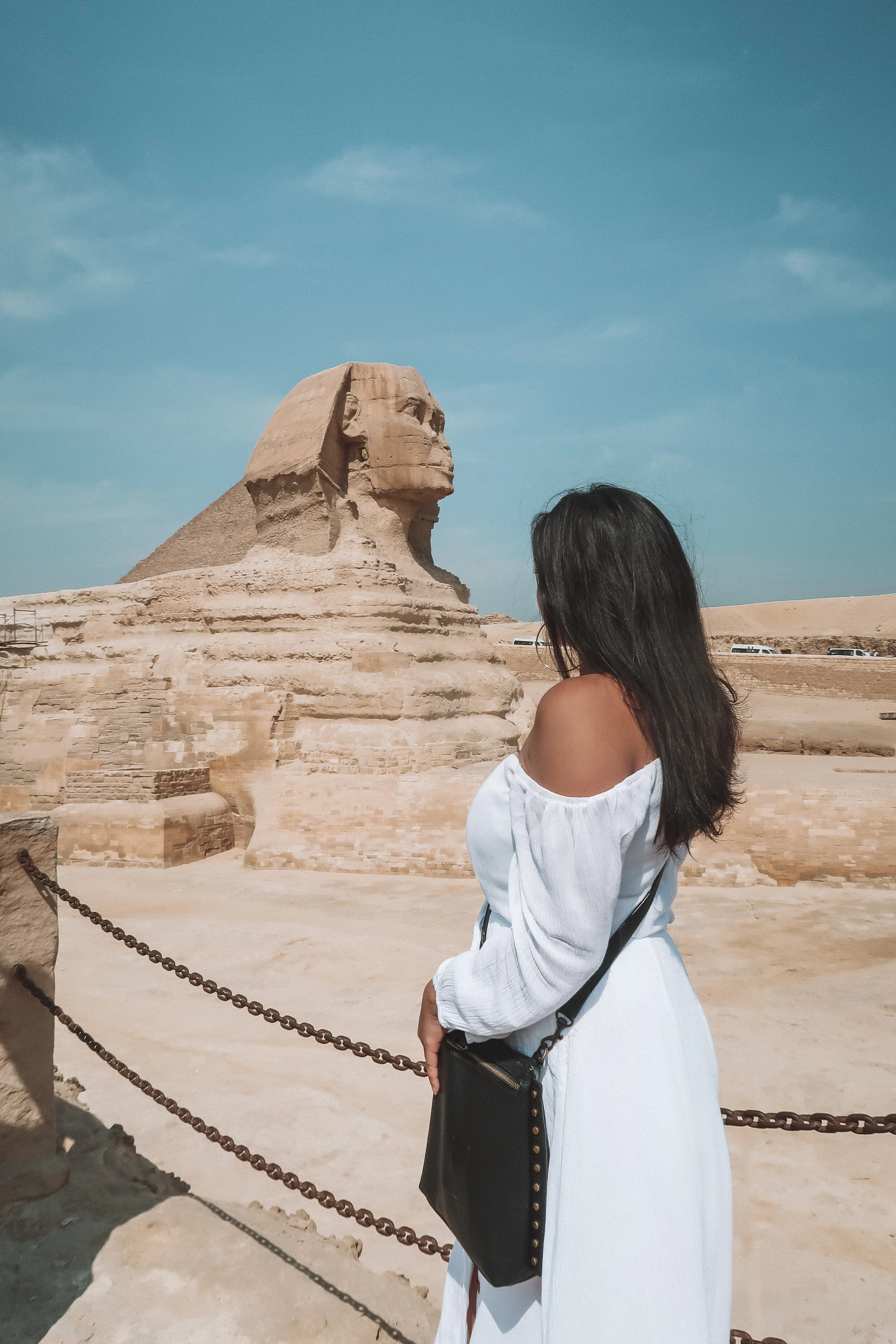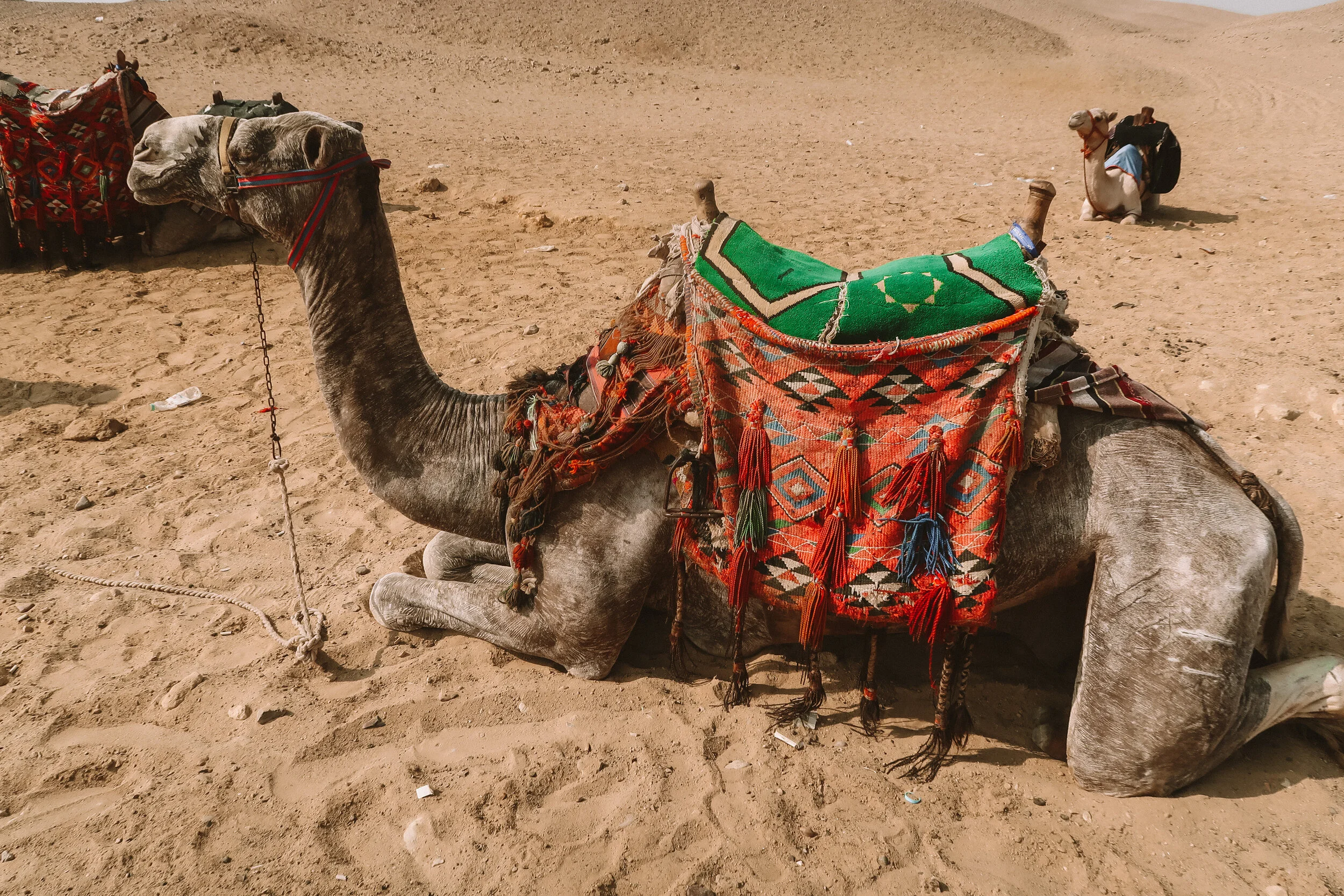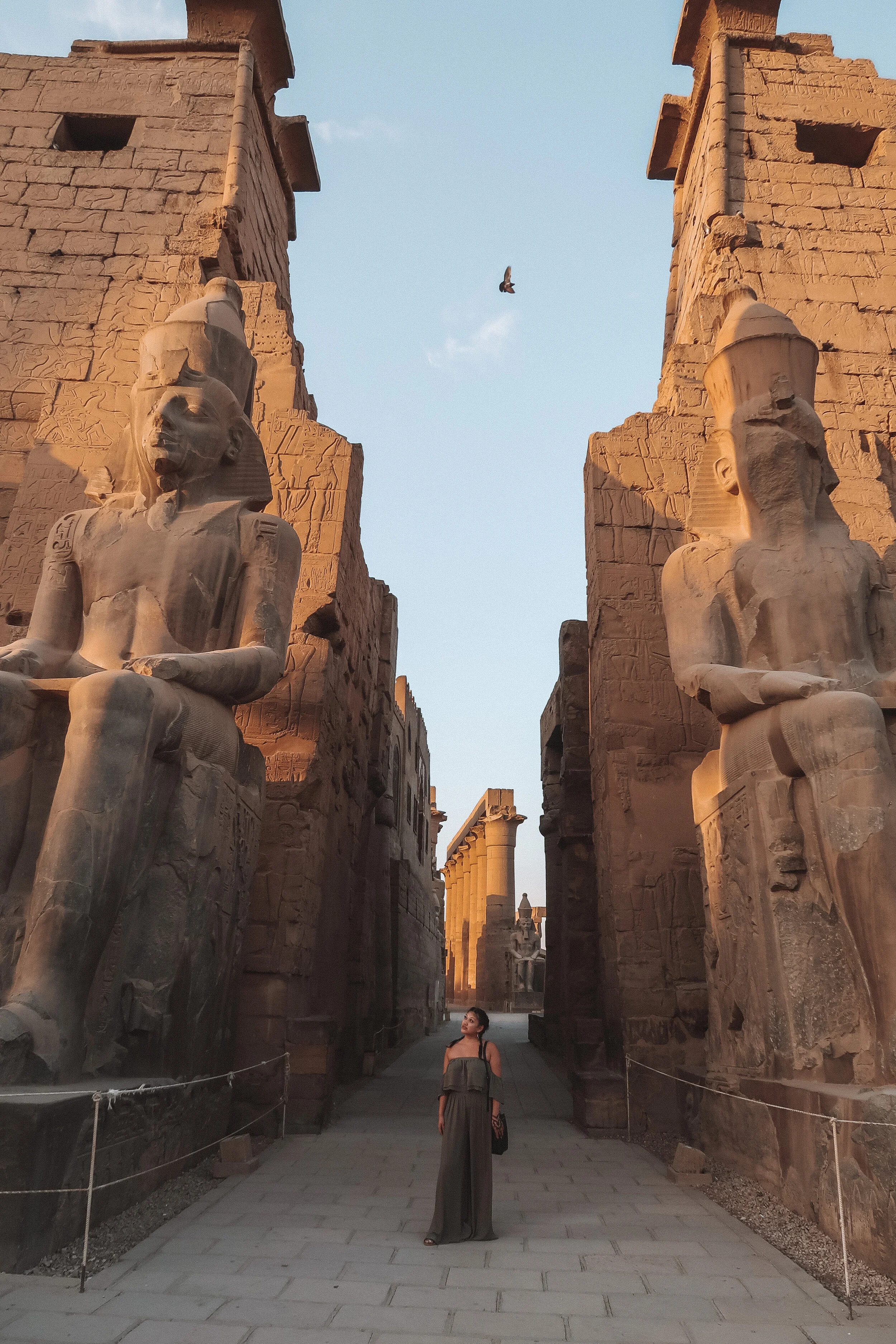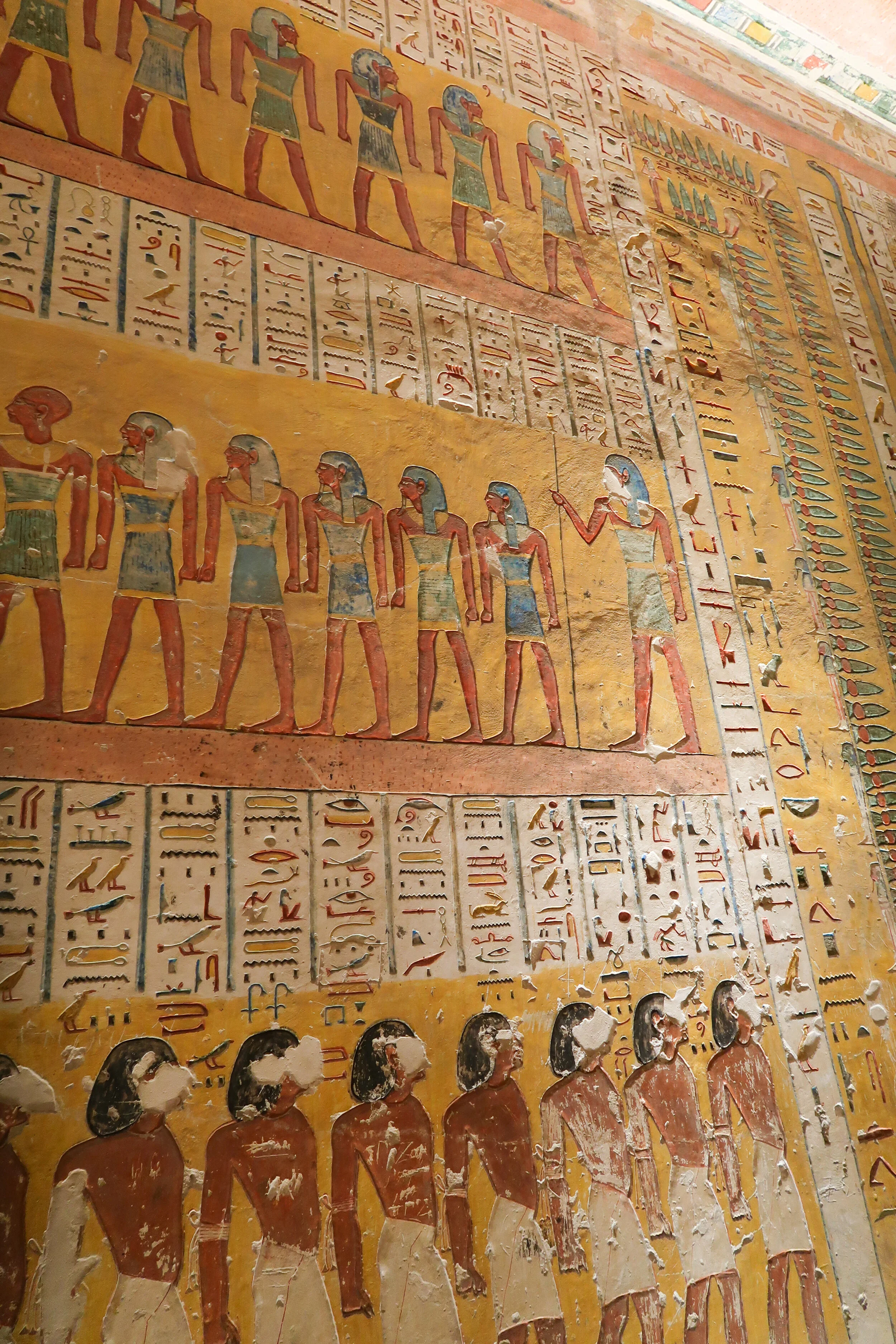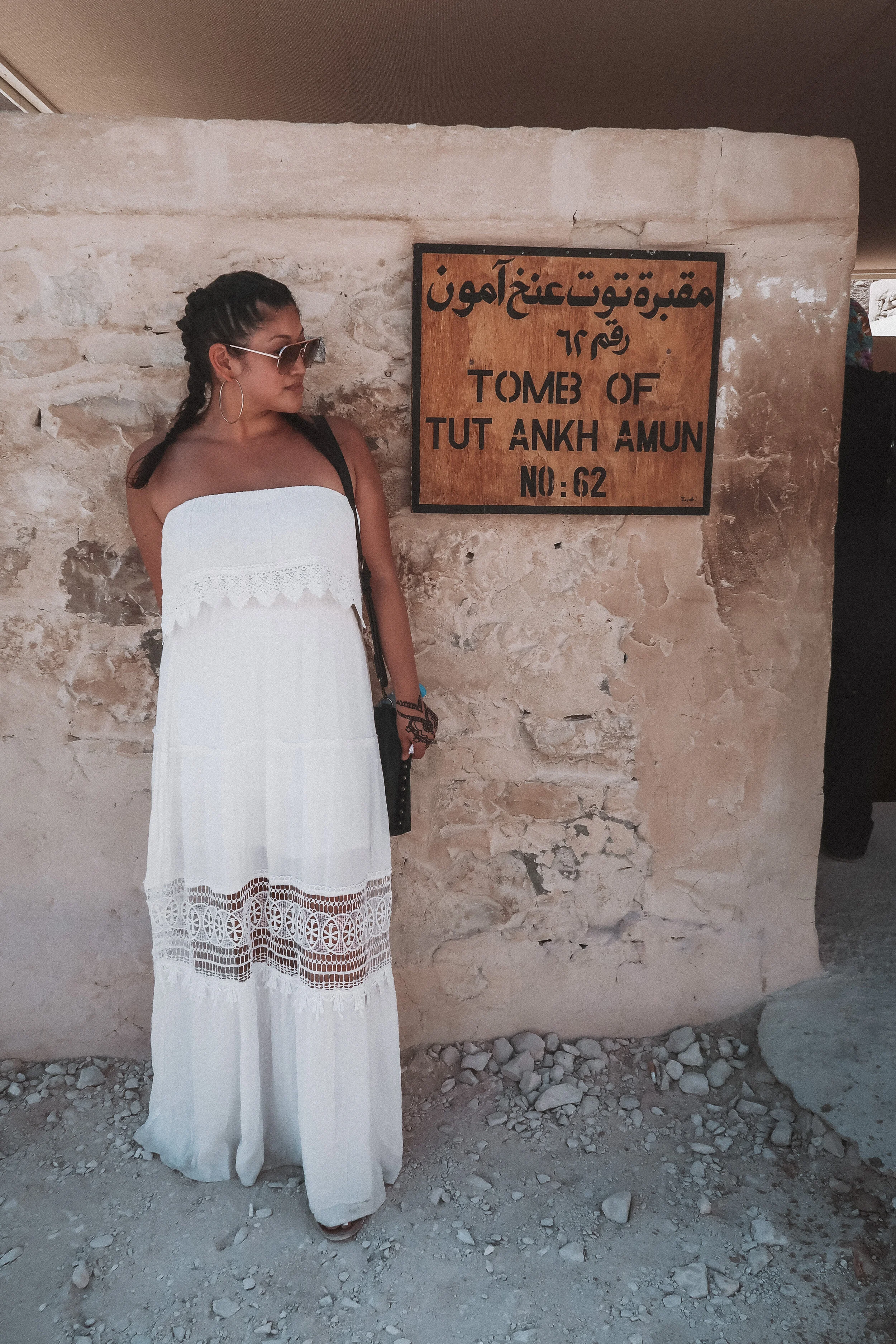Things to know before you go: Egypt
Every place I’ve been to holds a valuable place in my heart, but there are not enough words that can express how special Egypt was. With historic monuments, tombs and temples dating back to 4,000 years ago, walking around felt like a huge outdoor museum. Ancient Egyptian civilization was ahead of their time, with each grand masterpiece as impressive as the last. For any first timers, give yourself at least a week to travel through Cairo, Luxor and Aswan. If you have more time to spare, the city Alexandria, founded by the Greek ruler Alexander the Great, was also highly recommended. Although my adventure was cut down to just Cairo and Luxor (we had travelled between Jerusalem and Jordan prior) my time there gave me a great deal of insight into Egypt’s rich past and culture.
Get a guide: My #1 tip and the best piece of advice I could offer is getting a guide. This was my first time booking through a travel company and I would not have traveled to Egypt any other way. We booked a private tour with Odynovo because of a recommendation from a friend. Private tours obviously cost a lot more than group tours but there are plenty of benefits. The tour revolves around your schedule and is based on your personal itinerary. When we were working with our travel agent, they sent us a basic itinerary and we got to customize it to our liking. The price included our tickets to the attractions, hotel stay, private drivers, personal guides and flights between the cities in Egypt and Jordan (we traveled to Jerusalem on our own and Odynovo helped plan the later half of our trip). In total it was $1,667 each for 3 people, again pricing will vary depending on your wants, needs, how long you’re traveling for, etc. For us it was worth it because not only were we looking for the quickest route, but the safest transition from one country to another. We didn’t know what to expect and wanted to feel secure, especially with it being our first time traveling in the Middle East. Our travel agent, Sunny was patient and accommodating with our questions, concerns and changes via email. Also as someone who is used to planning every travel detail, it was refreshing not to organize most of it.
Our guides took us to their favorite neighborhood eateries, shopped at the finest specialty stores and helped us bargain for souvenirs at the souks (street markets), all while giving us an in-depth history lesson and an insight on modern day Egypt. I also felt relaxed knowing we were in good hands with our guides who knew the ins and outs of the area.
Safety: Since the Egyptian revolution in 2011 and terriorist activity past and present, tourism has decreased in recent years. Many will ask if Egypt is safe to travel to. With negative media images and stories on the news, it’s understandable to have a fixed perception of what a place might be like. Danger is unfortunately everywhere you go, even at home. With that being said, I personally never felt uneasy or at risk. The locals were very warm and welcoming.
Travel to the Northern part of the Sinai Peninsula, bordering Israel and Gaza, is banned to tourists and Egyptians due to terrorism. The popular resort by the Red Sea, Sharm el-Sheikh is considered safe, but beyond that avoid going towards the western desert.
As a woman, you may experience some unwanted comments and stares from men. Most were harmless, but it makes my next tip important. Like any other country, travel smart, do your research and be aware of your surroundings.
Dress modestly: Egypt is a religious, conservative country. Women should avoid wearing anything too revealing, short or tight. Cairo for me, felt a lot more traditional where you definitely want to cover up with extra layers. Luxor was more low key where I didn’t feel awkward or uncomfortable exposing my shoulders. Just to be on the safe side, bring along a light jacket or scarf to put on if needed. This is especially important if you plan on entering any religious sites like a mosque or a synagogue.
Book in the Fall/Winter: This may be an obvious tip since desert weather can be unbearable, especially in the Summer. December and January are considered to be their high season so expect the museum and monuments to be packed with tours and crowds. The further south you move away from Cairo, the hotter and drier it is. When we went in October, it was around 80 degrees Fahrenheit in Cairo and 90 degrees in Luxor.
Travel Visa: You can buy an e-visa in advance but buying it at the airport was also hassle free. With no wait time or long lines, we purchased ours for $25 USD (airport only accept US dollars).
Start your day early: I always prefer an early start when I travel anywhere, but if you want to beat the crowds of people and the heat, get to the ancient sites right when they open.
Uber/Careem: If you decide to do Egypt on your own without a tour or a private driver, Uber or Careem (Middle East’s version of Uber) is the best option over the metro or taxis. Popular sites are spread out and it may take awhile to get to if you use public transportation. Not only does this help with making the most of your time but you’ll be thankful for the air-conditioning, comfort and set pricing (you don’t need to haggle and it’s affordable).
Also be warned, their driving is chaotic. I have been to plenty of countries where driving rules that apply to the US are non-existent but Egypt is in a league of their own. I witnessed how crazy their driving was from our airplane! As we were descending to land, the cars on the freeway were weaving in and out of the lanes as if it were a video game. I’ve never seen anything like it. Cars on the streets are literally thisclose to one another and it’s perfectly normal for pedestrians to walk across a busy freeway. This is especially true for driving in Cairo.
Photo by Mekhamer/iStock / Getty Images
The local children LOVE tourist: One will come up to take a picture of you or with you. Don’t be surprised when you take a selfie and an even bigger crowd of kids start to surround you asking for more pictures. We primarily experienced this at the main landmarks like the Pyramids and around the Mosque of Muhammad Ali. If it wasn’t for our guide, we probably would’ve been stuck longer than we were. My advice would be to politely decline taking pictures because you might be there for awhile.
Visit the museum: While most of your exploring takes place outside, The Museum of Egyptian Antiquities in downtown Cairo can’t be missed. It houses the world’s largest collection of ancient Egyptian artifacts from the old, middle and new kingdom. Get an up close and personal look of countless statues, sarcophaguses (coffins), jewelry, papyrus, treasures from King Tut and other pharaohs and queens. You even see real mummies on full display. Most of these antiques will be moved to the brand-new, Grand Egyptian Museum located closer to the Giza Pyramids. The highly anticipated opening is set for the end of 2020,
Food: Koshari (also spelled kushari or koshary) is Egypt’s national dish. A random combination of lentils, rice, macaroni topped off with spicy tomato sauce, vinegar and fried onions. This entreè is a must have.
Photo by oversnap/iStock / Getty Images
Shopping for souvenirs , what to buy:
Bargain your way through the famous Khan el-Khalili, a main attraction for shopaholics like myself. Located in the center of Cairo, it’s one of the oldest bazaars in the Middle East. A good rule of thumb, which is similar to most places I’ve traveled to like Morocco or Bali is don’t settle for the initial price. Offer to pay for half of the asking price and work your way from there. If you still aren’t happy with the amount, step away. The seller may gave in and sell it to you for your asking price or you can find a different vendor with a similar item.
Cartouche: Pronounced kar-toosh is a name plate engraved in hieroglyphics. The cartouche, sometimes worn as an amulet, was mainly written on tombs and coffins of pharaohs, queens and other members of royalty. It was used to protect the body and soul against evil spirits in life and after death. With 18k gold and sterling silver options, the oval shaped pendant can be personalized with your name or a loved ones name in a matter of minutes. Our guide took us to a chic jewelry shop in Cairo and we even got to see the the engraving process as it happened. Since we went to a specialty shop for this, haggling for gold and silver only took a few dollars off the cost, but I was willingly to spend more on this specific purchase. It’s one my favorite pieces I took home with me.
Papyrus scroll: The Egyptians documented their history on papyrus, which was their version of paper (made from the papyrus plant). These hand painted illustrations chronicle well known stories and figures. Imitation papyrus is seen all over the markets and the authentic versions are sold in specialty shops .
Photo by kilukilu/iStock / Getty Images
Perfumes and scented oil: Pure, undiluted essential oil can be used to help heal or it can just be used as perfume or cologne.
Alabaster: Famous in Luxor, alabaster is a soft, translucent mineral usually hand carved into vases, sculptures, candle holders, etc.
Scarab beetle: Aka a dung beetle, was an amulet that symbolized rebirth, resurrection and protection. You can find them in different colors as carved figurines or on jewelry.
Jewelry: Besides the cartouche and scarab beetle, other popular emblems of ancient Egypt are, The eye of Horus, symbol of protection, power and good health and the Ankh aka the key of life, represents eternal life. You can find gold and silver pendants, earrings, bracelets, necklaces and rings with these images.
Cruise along the Nile River: Considered one of the longest rivers in the world, a trip to Egypt wouldn’t be complete without going on the Nile. You can pre-book a buffet dinner cruise with live music and belly dancing in Cairo. Another popular option for those with more time to spare, is a journey from Cairo to Luxor to Aswan on a riverboat or a felucca, a traditional wooden boat.
Conclusion: Egypt instantly transports you back in time and into the ancient world, the land of Pharaohs, mummies, hieroglyphs and hidden treasures. Whether you’re a history buff, a photographer, explorer or you just want to channel your inner Indiana Jones, it’s a destination fulfilling every travelers’ fantasy.
Sad to say I didn’t get to make it to The Great Temple of Abu Simbal. A 4 hour drive from Aswan, it is one of Egypt’s highlights.

